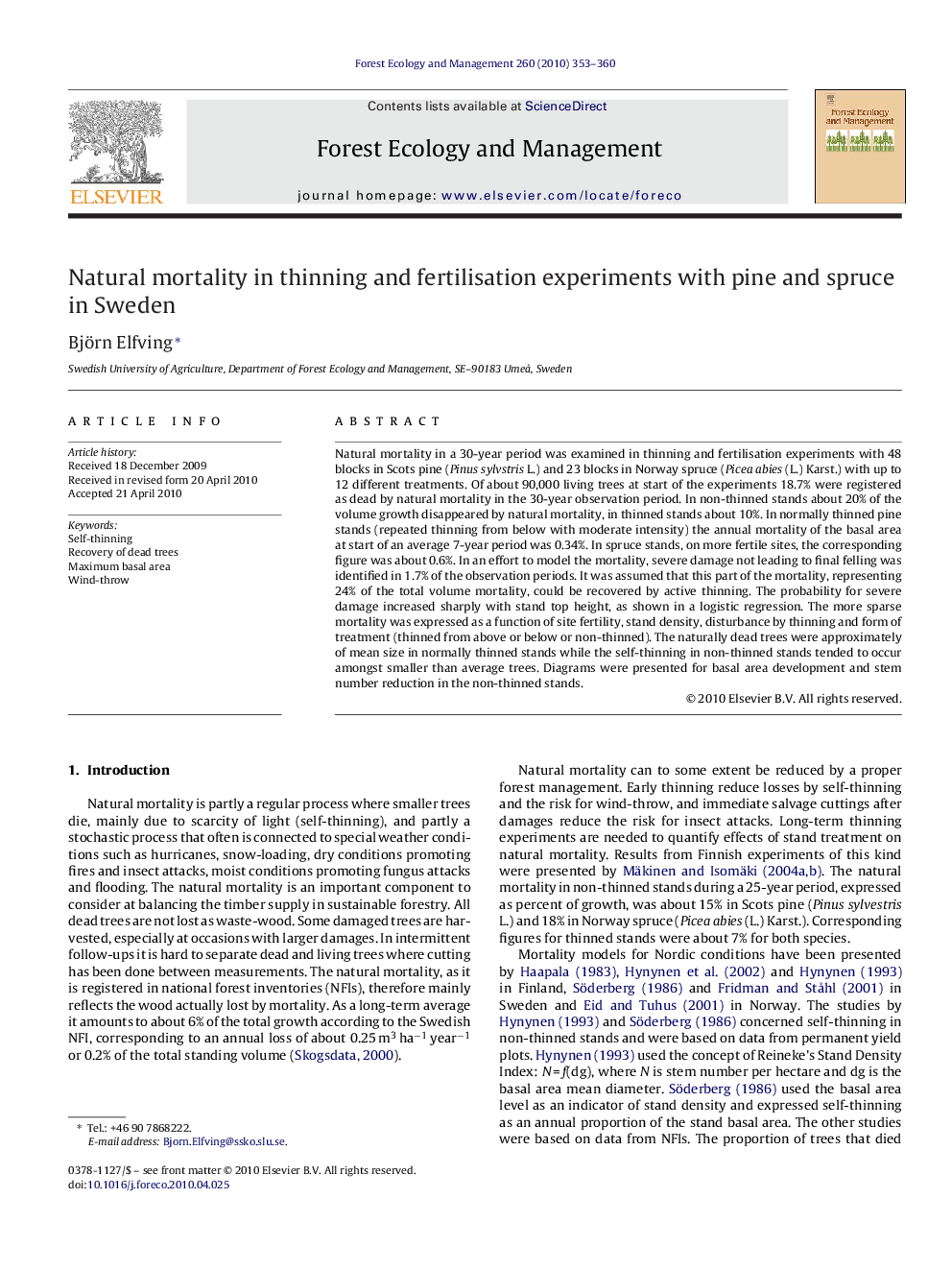| Article ID | Journal | Published Year | Pages | File Type |
|---|---|---|---|---|
| 88022 | Forest Ecology and Management | 2010 | 8 Pages |
Natural mortality in a 30-year period was examined in thinning and fertilisation experiments with 48 blocks in Scots pine (Pinus sylvstris L.) and 23 blocks in Norway spruce (Picea abies (L.) Karst.) with up to 12 different treatments. Of about 90,000 living trees at start of the experiments 18.7% were registered as dead by natural mortality in the 30-year observation period. In non-thinned stands about 20% of the volume growth disappeared by natural mortality, in thinned stands about 10%. In normally thinned pine stands (repeated thinning from below with moderate intensity) the annual mortality of the basal area at start of an average 7-year period was 0.34%. In spruce stands, on more fertile sites, the corresponding figure was about 0.6%. In an effort to model the mortality, severe damage not leading to final felling was identified in 1.7% of the observation periods. It was assumed that this part of the mortality, representing 24% of the total volume mortality, could be recovered by active thinning. The probability for severe damage increased sharply with stand top height, as shown in a logistic regression. The more sparse mortality was expressed as a function of site fertility, stand density, disturbance by thinning and form of treatment (thinned from above or below or non-thinned). The naturally dead trees were approximately of mean size in normally thinned stands while the self-thinning in non-thinned stands tended to occur amongst smaller than average trees. Diagrams were presented for basal area development and stem number reduction in the non-thinned stands.
